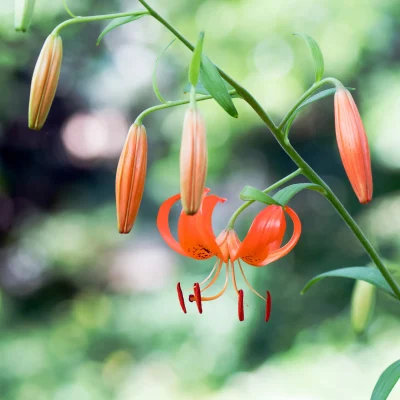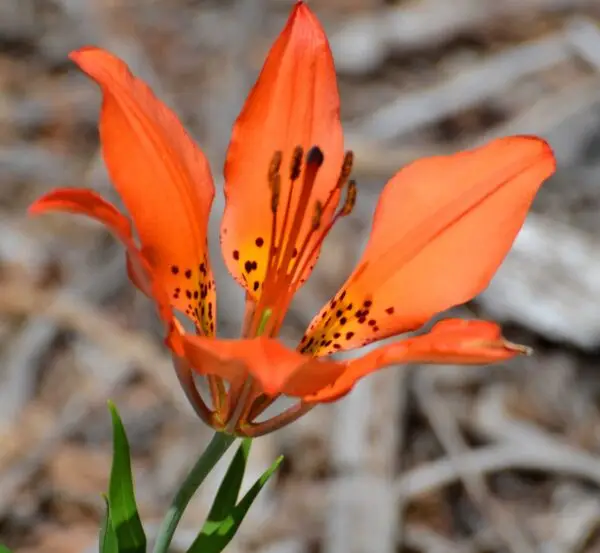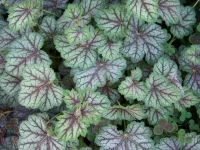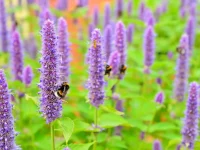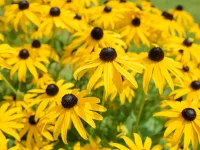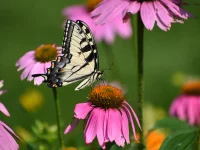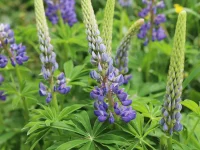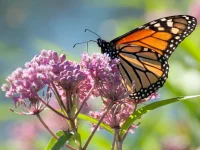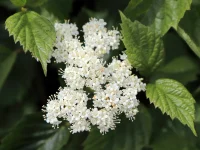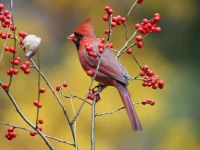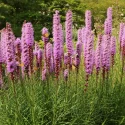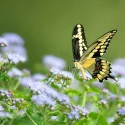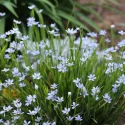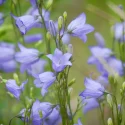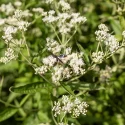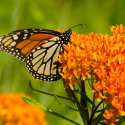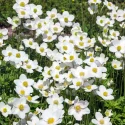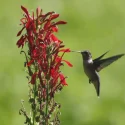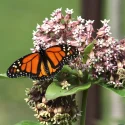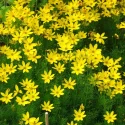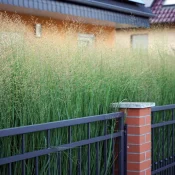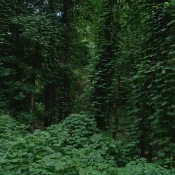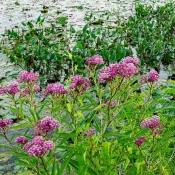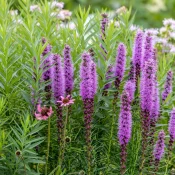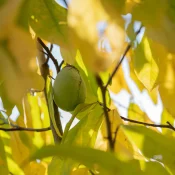Native Lilies: A Beginner’s Guide
There are hundreds of lilies worldwide, with flower colors that span the rainbow. Approximately twenty-two lily species are native to North America, alongside a handful of other native flowers that go by the ‘lily’ moniker. These native lily flowers offer beauty, resiliency, and minimal care. Read on to meet some native favorites for your landscape.
- Full Sun, Part Sun
- Height depends on species
- Summer flowers, Spring flowers
- Pollinator lifeline

What are the benefits of planting native lilies?
With around 100 species of lilies worldwide—and thousands more cultivars—it’s no wonder they’re garden favorites. Their long-lasting, vibrant blooms make a statement in any landscape.
But before reaching for the usual store-bought varieties, consider adding native lilies to your garden. Why?
✅ They’re built to thrive. Native lilies are perfectly adapted to local conditions, meaning once established, they flourish with just rain—no extra fuss.
✅ They support wildlife. Native lilies provide essential nectar, pollen, and habitat for butterflies, birds, and pollinators.
✅ They’re absolutely stunning. These plants have been overlooked for far too long. Ready to add some to your yard? Explore our native plant profiles and find your next favorite bloom. 🌿🌸
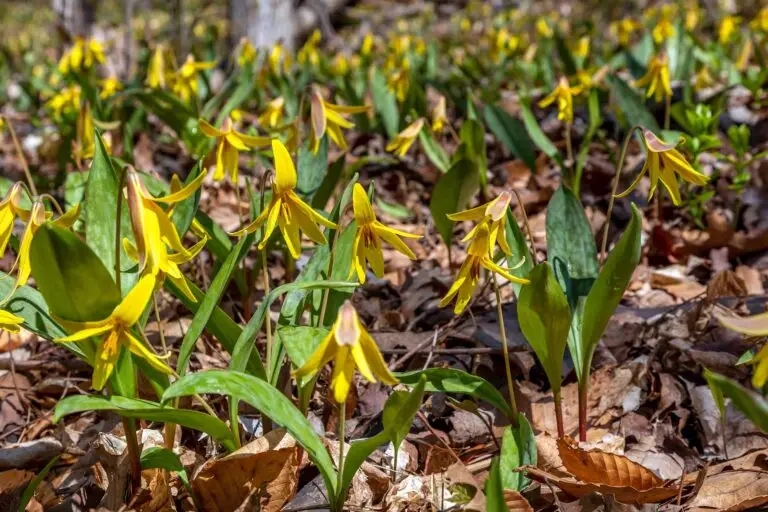
Since lilies are everywhere, you’re probably wondering…
How can I tell if a lily is native or not?
With lilies everywhere, how can you tell which ones are truly native to your area? Here’s what sets them apart:
Native lilies need good drainage.
Unlike some cultivated varieties, native lilies don’t tolerate soggy soil. They thrive in well-drained spots like hillsides, raised beds, and containers.
Native lilies’ flowers point downward—except for the Wood Lily.
Most native lilies have elegant, nodding blooms, like tiny hanging bells. The Wood Lily (Lilium philadelphicum) is the exception, standing out with upward-facing flowers.
Already have lilies in your garden, and I’m wondering if they’re native? Look at the way the flowers point. If the flower points upwards—unless it looks like the Wood Lily—it’s non-native.
Non-native Lilies
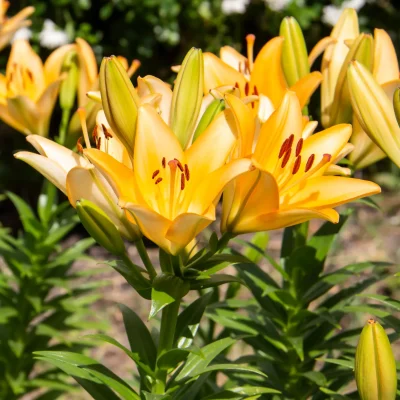
Do your flowers point upwards? Lilies that point upwards are from Asia unless they look like the Wood Lily (see below).
Now that we’ve briefly talked about non-native lilies, let’s meet some lily species that are native to North America.
Meet some North American Native Lilies
We’ve organized generally by region, from the Eastern United States moving westward.
Native Lilies for the Eastern Seaboard
Wood Lily
Lilium philadelphicum
Wood Lilies’ petal color ranges from red to orange, with dark purple spots on the interior of the flower. They are stunning up close—like miniature modernist paintings. These are the only native lilies with flowers that point up (the others’ flowers hang down.) Wood Lily’s native range is large: from the Mid-Atlantic to the Midwest.
1-3′ feet in height, Wood Lily grows in a wide range of moisture (wet to dry), prefers well-drained areas, and is drought-tolerant once established. Pair with Butterfly Weed, Blazing Star, and asters.
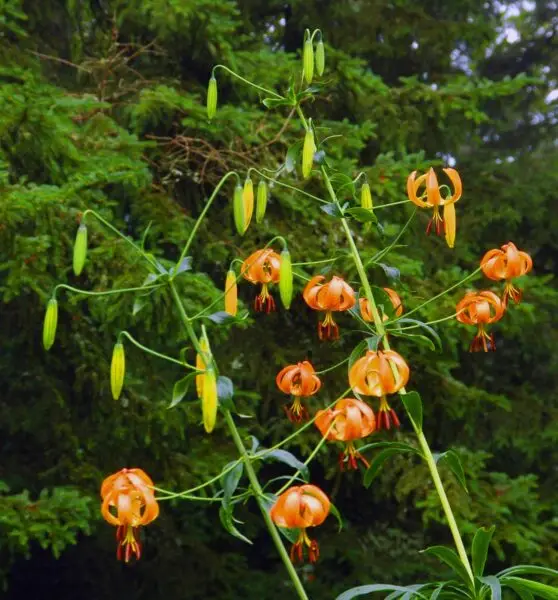
Turk’s Cap Lily
Lilium superbum
You have to have this flower once you’ve seen it. Turk’s Cap puts out a chandelier of orange lily flowers, each appearing hand-painted with tiny spots. You can’t walk by without taking a picture.
Turks Cap Lily grows 4-10 feet (making it the tallest of North American lilies.) But WOW—if you have the space—plant some immediately. Native from New Hampshire down to Florida, and west to Arkansas.
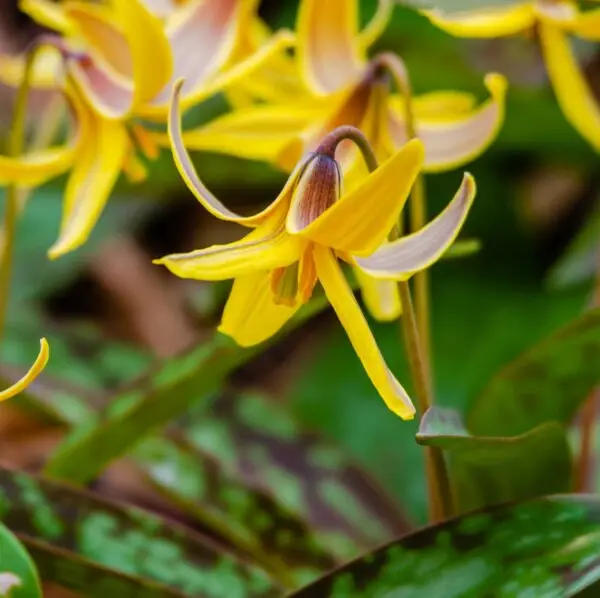
Trout Lily
Erythronium americanum
Trout Lilies have beautiful tiny flowers in the early spring, surrounded by intricately dappled green leaves. (The name ‘trout’ comes from this speckling.)
Trout Lilies are some of the earliest plants to flower in the Northeast, Midwest, and Mid-Atlantic. They also appear like magic: putting out leaves, blooming, and then disappearing—all within a month. But don’t worry: they’ll be back again next spring to perform the trick again. (Plants that appear/disappear in the spring are called ephemerals.) Trout Lilies will easily spread when in moist, rich soil.
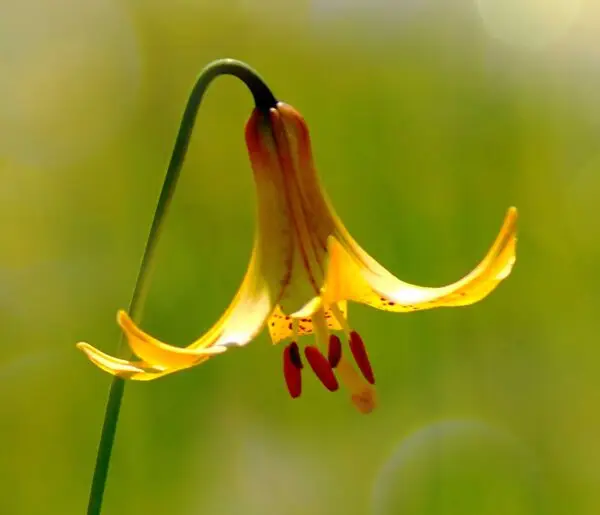
Canada Lily
Lilium canadense
This image makes it look a little underwhelming…but Canada Lily can have up to 20 FLOWERS on a single plant! These are beautiful plants that reach 2-4′.
Although Canada Lily is native to a wide range of North America—from the Northeast to the Midwest—these are difficult to find in nurseries. So if you do find some—scoop them up and find a spot in your garden.
Western lilies
Now, let’s head over to the western side of North America and meet some of the lilies that call the Northwest and California home.
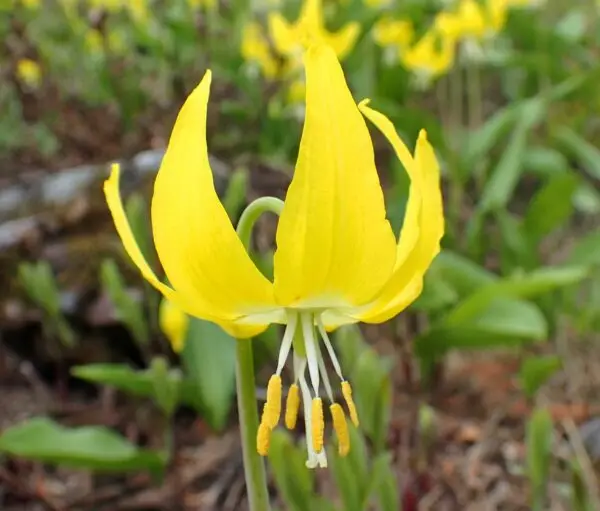
Glacier Lily
Erythronium grandiflorum
Glacier Lily also goes by the common names Yellow Fawn Lily, Yellow Avalanche Lily, Snow Lily, and Lamb’s Tongue. As you can guess from the name—these lilies are some of the very first flowers to bloom after the snow melts in the Northwest.
Glacier Lily’s bright yellow flowers are a welcome sight after months of snow, and they can blanket fields in the wilderness with their vibrant beauty. Great pairings include Red Columbine, Blazing Stars, and Trout Lilies.
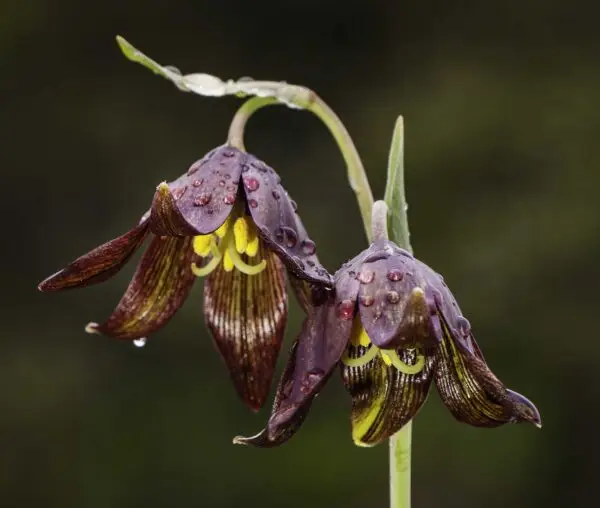
Chocolate Lily
Fritillaria biflora
Native to California, this diminutive flower blooms in the spring and then dies back when temperatures rise in the summer. Its dark chocolate brown flowers are unlike anything else in the garden.
Chocolate Lilies like morning sun, but not blazing afternoon sun. Plant it alongside flowers that bloom later in the summer to have a gorgeous garden and food for pollinators—California Poppies are excellent pairings.
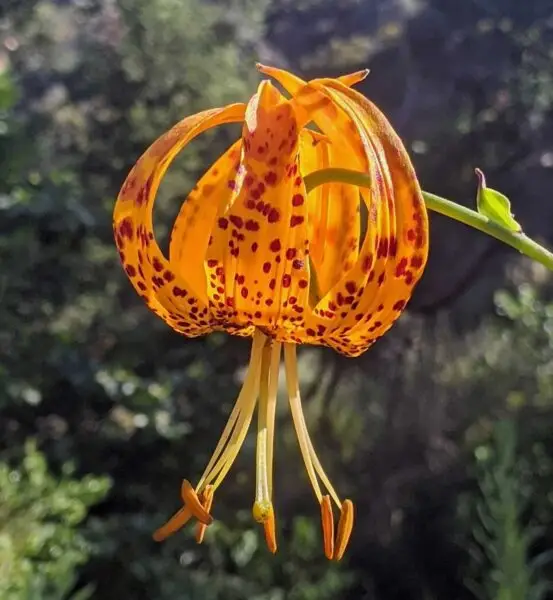
Wild Tiger Lily
Lilium columbianum
This native flower also goes by the common name Columbian Lily. No matter what you call it, it’s a must for Northwest and California gardens. You’ll know it by its explosion of dark purple-ish freckles scattered across its bright orange flowers, which wrap upwards like a turban.
At its happiest, it can get up to 6′ tall (otherwise it’s a smaller 1-2′.) Wild Tiger Lily blooms for a long time—from May to early August.
Hmm…are these all lilies?
Plant nerds may be saying—hey…some of these flowers are not in the Lilium genus. And they’re right—some are not. But the purpose of The Plant Native is to make native gardening a little easier to understand. So we’ve included some plants outside of the Lilium genus that also go by the common name ‘lily.’
And we stand by the opinion that you don’t have to memorize Latin to get into native gardening.
Are native lilies hard to grow?
There are some gardeners and gardening books that say that native lilies are much harder to grow than non-native, Asian lilies.
To this, we say:
We all lived through a pandemic—we don’t have to be afraid of flowers
Don’t be intimidated! Remember: native plants plant themselves, with no human intervention. If they can plant themselves, we can plant them too.
(Also—give yourself more credit. Remember when we were washing the groceries and homeschooling our kids in 2020? You got this.)
Tips for success with native lilies
The best bet to ensure your native lilies thrive is to:
- Buy or get native lilies from reputable sources: native plant society sales, local native nurseries, etc.
- Ensure you’re planting them in an environment they like (if they don’t like full sun or don’t like to be waterlogged…respect their needs and stay away from those areas)
- Drainage, drainage, drainage: a common killer of native lilies is root rot
- BE PATIENT. Native lilies get a bad reputation at times because it can take a few seasons for them to grow to their most spectacular. But once they’re happy, they will come back for years and years (even decades.)
Where can I find native lilies for my garden?
We’re not going to lie—finding native plants can be challenging. Most conventional nurseries don’t stock native plants (or mainly stock native cultivars).
To make finding native lilies easier, here are four tried-and-true ways to find some for your garden:
Where can I find seeds and plants?
Finding native plants can be challenging (we partly blame Marie Antoinette.) To make it easier, we’ve assembled four sourcing ideas.
Native Nursery List
300+ native nurseries makes finding one a breeze
Online Native Plant Sellers
We've included 100+ online resources to help
Society Plant Sales
Every state has a native plant society; find yours
Online Communities
Local Facebook groups are a great plant source
What are good pairings for native lilies?
There are so many beautiful, resilient, and fuss-free native plants to pair with native lilies. Your best bet is to visit our regional guides to find pairings that get you inspired:
Native plants that grow almost anywhere
Some native plants with huge ranges are perfect for native landscaping. Some all-time favorite native plants that thrive in most of North America include:
And now you’ve met some native North American lilies! These resilient, gorgeous flowers are musts for American and Canadian gardens. Let’s move away from the non-native lily species and instead plant these native options, making our garden a fuss-free pollinator paradise—especially compared to lawns. Keep exploring our native guides to garden favorites, including our Beginner’s Guide to Native Hydrangeas or our Beginner’s Guide to Native Roses. Happy planting!
Sources
- Edge of the Woods, Spotlight on Native Lilies
- USDA Plants Database: Turk’s Cap Lily
- USDA Plants Database: Wood Lily
- USDA Plants Database: Columbian Lily
- USDA Plants Database: Canada Lily
- Art, Henry W. A Garden of Wildflowers: 101 Native Species and How to Grow Them. (1986), 128-131, 136-137, 166-167.
- North American Lily Association, Types of Lilies
- Craigmyle, Marshall. “The Illustrated Encyclopedia of Perennials.” (2002), 175-176.
